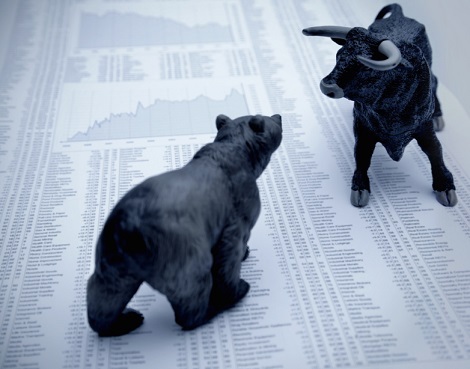Raise your hand if you saw this coming. The Dow Jones Industrial average ran its consecutive positive close streak to eleven days in a row with its close of +9.1 points on Friday, February 24th. That also marks the 11th straight record high, which is the longest such streak since 1987. Three more positive closes in a row will match the record 14-session winning streak last seen in…1897, according to data compiled by Bespoke Investment Group. This record wasn’t beaten though, the streak of consecutive up days only reached twelve before closing down on Tuesday, February 28th.
The Dow was up nearly 9.1% over the past three months, with investors attributing gains largely to President Trump’s November election victory. Investors are betting that President Trump’s policies on taxes and regulation will accelerate economic growth and boost corporate earnings. But what were they saying a few months ago? The tone was markedly different. Market crash predictions abounded from all corners of the investment world as the pundits and analysts pondered a Trump victory. Certainly, none of these market gurus could have foreseen eleven consecutive record closes. “A Trump win will be bad for stocks”, “A Trump win will tank the markets” were some of the headlines. Oh, it crashed all right, but many folks slept right through it. As it became increasingly more obvious on election night hat Trump was going to win, pre-market stock futures slid down almost 800 points…predicting, for a brief time, that the market was going to welcome Trump’s victory by opening deep in red territory. However, by the time the market actually opened a few hours later, the pressure on stocks had abated. And to the surprise of the world, the market finished UP almost 300 points that day.
Could the market gurus have been more wrong? Well, yes. This dwindling gaggle of soothsayers also predicted doom and gloom last year in what became known as Brexit. Brexit, short for “British exit”, was the vote by the British citizens to exit the European Union back in June of 2016. There were two failed predictions here by the experts. The first was that there was no way the Brits would vote to leave. Secondly, and more importantly for investors, experts once again predicted that markets would crash all over the world if this happened. Well it happened and while markets sold off sharply at first, they recovered in a few short days. Now, months later, Brexit is a distant memory as the U.K., too, recently set an all-time high record close.
Then there was the crash of 2008. While many saw trouble on the horizon, almost no one’s U.S. economy predictions included the disaster it came to be as the credit crisis caused widespread dislocations in credit markets, which threatened the entire financial system as we knew it. In fact, many forecasters remained bullish on stocks all the way down.
These are just some recent examples of the stock market’s innately unpredictable ways and the failed predictions of the pundits. The financial markets are littered with economic forecasters whose proclamations emanate from acute cases of collective thinking and confirmation bias. Most are afraid to be too outlandish in their predictions and therefore have the inability to foresee unusual events that have severe consequences. It’s rarely the risk you see coming that turns out to be the crisis to avoid.
While predicting election outcomes, legislative risk, the impact of economic policy or geopolitical risk is hard enough, betting on how the market is going to react to these events has proven over and over again to be a fool’s errand. In fact, often it leads to poor investment returns. Many advisers, as well as retail investors, made this mistake last year. The uncertainties caused many to preemptively reduce equity exposure or eliminate it altogether, and it cost them.
Speculating on broad market reaction to future events is not investing. However, this doesn’t mean turning a blind eye to events sure to move markets. Proper risk management means always being wary and cognizant of changing market conditions. But with the inability to immediately and accurately recognize the fate of stocks, a disciplined risk mitigation approach is required. A defined exit strategy allows investors to stay allocated and only react to changes in market sentiment and deteriorating conditions with the goal of avoiding severe and debilitating losses. Small pullbacks, whether event driven or not, are healthy for the long-term prospects of the market and shouldn’t be met with panic selling.
Nor should investment decisions be made because a collective group of forecasters read and react to each other’s analysis. Rather it pays to stay true to a diversified strategy and follow disciplined exit protocols that will help to largely avoid the real crisis that no one sees coming.



